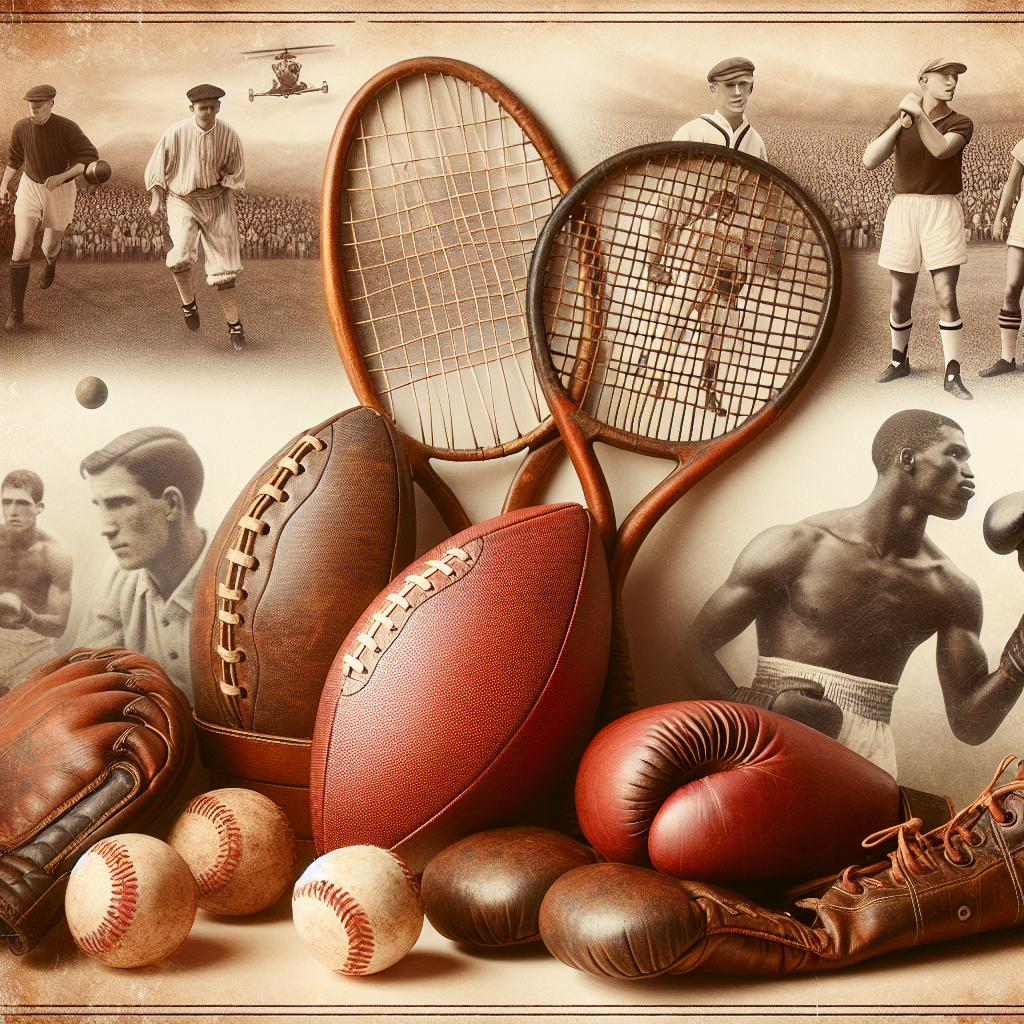Reflecting on historical sports rankings offers valuable insights into the evolution of competitive sports, the shifting landscapes of various leagues, and the factors that drive excellence in athletic performance. The year 2025 stands as a critical juncture where the lessons learned from past rankings not only serve as a mirror reflecting the achievements of athletes and teams but also guide current and future generations in understanding the essence of competition. In this article, we will delve into the nuances of historical sports rankings and unpack the lessons gleaned from them, all while focusing on the trends that continue to shape today’s sporting culture.
Understanding the Evolution of Sports Rankings
To fully appreciate the lessons learned from historical sports rankings, it’s essential to understand how these rankings have evolved over time. In the early 20th century, rankings in sports were often based solely on win-loss records, goals scored, or other simplistic metrics that failed to capture the whole story of a season. For instance, before the advent of data analytics, sports enthusiasts relied heavily on media narratives and subjective opinions. This often resulted in biases that shaped public perception rather than providing an accurate representation of team or player performance.
As we progressed into the late 20th century and into the 21st century, advanced metrics and analytics began to permeate the world of sports. The introduction of concepts like Player Efficiency Rating (PER) in basketball or WAR (Wins Above Replacement) in baseball provided fans, analysts, and teams with a more nuanced understanding of performance. In 2025, we see rankings that not only take into account quantitative data but also qualitative factors such as player health, team dynamics, and even social media presence. This shift shows that historical sports rankings are more than just numbers; they are a reflection of the broader cultural and economic trends that inform sporting excellence.
The Impact of Technology on Sports Rankings
The role of technology in shaping sports rankings cannot be overstated. In 2025, we witness the culmination of decades-long trends where advanced algorithms and machine learning are employed to evaluate performances. An excellent example can be observed in sports like football, where GPS and biometric data are now routinely used to gauge player efficiency, stamina, and overall contribution to the team’s success. This technological backdrop has fundamentally reshaped how we view player rankings, moving from traditional metrics to a more holistic assessment of talent.
Furthermore, social media platforms have significantly influenced the ranking discourse. Athletes’ performances can be dissected and debated almost in real time, drawing attention not just to their scores but also to their influence and aesthetics—elements that were rarely included in previous ranking systems. For instance, athletes like LeBron James and Lionel Messi are not only ranked based on their performance in games but also on their marketability and fan engagement. This intersection of technology and social dynamics is crucial for understanding how historical sports rankings have transformed over time and how they will continue to evolve.
Lessons Learned from Historical Sports Rankings
A significant lesson learned from historical sports rankings is the importance of context. Rankings can dictate perceptions, influencing fans, recruiters, and investors alike. For example, a team that might consistently rank low could possess untapped potential—perhaps through a young roster or recent coaching changes—but might not be given the consideration they deserve. In 2025, teams and analysts have started to embrace this lesson, understanding that historical performance must always be weighed against current contexts. A team’s historical dominance does not guarantee future success, and conversely, a struggling team’s potential should not be overlooked.
Moreover, the pitfalls of over-reliance on rankings can detract from genuine competitive spirit. The excitement of underdogs upsetting higher-ranked teams reflects the unpredictability of sports and illustrates how rankings can sometimes fail to account for hidden strengths or weaknesses. The Lesson? Champions are often borne from adversity, demonstrating that motivation and morale drastically impact outcomes. Historical rankings remind fans and analysts that they should consider intangibles like teamwork, coaching philosophy, and mental resilience when evaluating a team’s potential.
Lastly, the significance of historical sports rankings lies in their ability to tell stories. Ranking systems can immortalize moments that transcend mere statistics—from a player’s incredible comeback after injury to a team’s relentless quest for redemption after a devastating loss. In examining historical data, we learn about the narratives that shape each sport. As we reflect on these stories in 2025, we recognize that the metrics we use can create legacies that inform generations of athletes and fans alike.
Emerging Trends in Sports Rankings
As we move deeper into 2025, several emerging trends suggest that the future of sports rankings will continue to shift and adapt. One important trend is the integration of mental health metrics into performance rankings. Teams are starting to recognize that athletes’ mental well-being directly influences performance. This shift is crucial as it acknowledges that while physical prowess is measurable, mental resilience is equally important, suggesting a more comprehensive approach to evaluating both players and teams.
Another trend is the focus on diversity and inclusion in sports rankings, which also ties into broader societal changes. In 2025, rankings are increasingly reflecting a commitment to highlighting underrepresented groups within sports. This shift involves recognizing not only achievements from diverse athletes but also creating spaces for them in media and marketing. By embracing a more inclusive approach, sports rankings will reflect the diversity of talent available across various demographics.
Furthermore, the fusion of real-time analytics with historical data is becoming more popular. Current rankings are now informed by ongoing data streams that capture player performance during live matches. Such real-time data analysis enriches historical context by revealing how short-term performance spikes or declines can influence long-term rankings. As technology continues to evolve, these data-driven decisions will likely play an increasingly prominent role in determining the rankings of teams and athletes.
Bridging the Gap between Historical Context and Contemporary Performance
To effectively leverage historical rankings for current success, athletes and teams must employ a strategic approach. In 2025, coaches often reference historical performances to motivate their athletes. By highlighting past successes and failures, they frame contemporary challenges as part of a larger narrative. This connection serves not only as inspiration but also fosters an understanding amongst athletes that their performances contribute to a grander saga of their respective sports.
Moreover, teams are increasingly looking to history as a teaching tool. By reviewing past mistakes—such as strategic missteps during critical games—teams can learn valuable lessons that inform their current play style. This reflective practice fosters a culture of continuous improvement within teams, emphasizing that recognizing past errors can be as critical as celebrating past successes.
Finally, bridging the gap between historical context and contemporary performance requires a commitment to humility and adaptability. The sports world is dynamic; what worked for one generation may not work for another. Therefore, in 2025, a flexible mindset that embraces learning from historical rankings while adapting strategies and techniques is vital for sustained success in a competitive environment. Such an approach empowers athletes and leaders alike to break new ground while honoring the lessons taught by those who came before them.
Anticipating the Future of Sports Rankings
As we look ahead, the future of sports rankings appears poised to become even more complex and data-driven. With advancements in Artificial Intelligence and Machine Learning, we may soon witness a new era of analytics that tracks more whimsical elements such as player emotions, social media buzz, and even public sentiment to provide rankings. By considering a multitude of factors, these future rankings could provide a multi-dimensional view of athlete performance that transcends traditional barriers.
Additionally, the rise of virtual and augmented reality technologies may offer fans a more immersive experience, where they can visualize players’ skills and understand the data behind their rankings in real time. As fan engagement grows and expectations for immediacy increase, teams and leagues will need to adapt to maintain relevance and connection with their audiences.
Lastly, expanding the globalization of sports will profoundly impact rankings in various leagues around the world. With athletes traveling between countries and leagues more frequently, the integration of international players will create a richer tapestry of competition. In 2025, we can expect to see rankings that not only reflect local talent but also global influences. This interconnectedness ensures that historical sports rankings will continue to evolve and remain relevant in the narrative of sports history.
Conclusion
Reflecting on historical sports rankings provides us with critical lessons that extend beyond mere statistics. Context, mental health, and inclusivity emerge as vital components that underscore the complexity of performance assessment. The emerging trends indicate a future where technology, empathy, and a broader understanding of human experience shape how we evaluate athletic success. In 2025, embracing the past while strategically navigating future complexities will ensure that teams and athletes continue to thrive in the ever-shifting world of sports. As we move onward, the stories created through rankings will continue to inspire generations, revealing the triumphs, struggles, and enduring legacies within the rich tapestry of sports history.
FAQs
What are historical sports rankings?
Historical sports rankings are assessments of teams or athletes based on their performance metrics over time. They serve to track achievements and provide insights into the evolution of competition within a particular sport.
How have sports rankings changed over time?
Sports rankings have transformed from basic win-loss records to complex evaluations incorporating advanced metrics, analytics, and qualitative factors like player health and social media engagement, reflecting a more holistic understanding of performance.
Why are lessons learned from historical sports rankings important?
Lessons learned from historical sports rankings can guide teams and athletes in their training and performance strategies by emphasizing context, motivation, and adaptability, ultimately fostering success both on and off the field.












